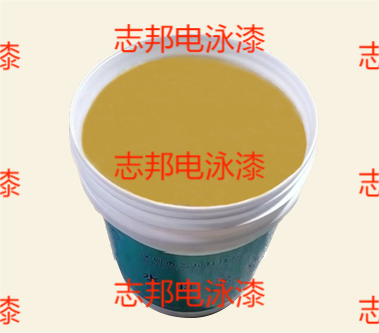What Materials Are Electrophoretic Paints Made Of?
Electrophoretic paint, as a type of coating widely used in metal surface treatment, plays a crucial role in multiple industries due to its excellent corrosion resistance, decorative properties, and wear resistance. So, what materials are electrophoretic paints made of? This article will provide a detailed analysis of the main components of electrophoretic paints and their functions.
The foundational component of electrophoretic paint is resin. Resin serves as the curing and binder agent in electrophoretic paint, determining the basic properties of the paint film. Common types of resins include epoxy resin, polyester resin, and acrylic resin. These resins not only impart good adhesion and durability to electrophoretic paint but also allow pigments to be uniformly dispersed in the liquid paint and form a solid coating after deposition.

Solvents are also an indispensable part of electrophoretic paint. Although modern electrophoretic paints are mainly water-based, in some cases, small amounts of organic solvents may still be used. The main role of solvents is to help resins and other components uniformly disperse in the paint, improving its fluidity and coatability. At the same time, solvents play a role in adjusting the rheological properties and drying characteristics of the paint film during the electrophoretic deposition process, enabling the paint to uniformly deposit on the surface of the coated object and rapidly evaporate after deposition to form a uniform and smooth coating.
Pigments and fillers are used to impart color to electrophoretic paints and improve the physical properties of the paint film. Pigments can be divided into inorganic pigments and organic pigments, which can give electrophoretic paints different colors and special functions, such as corrosion resistance. Fillers, such as titanium dioxide and talc, are used to enhance the hardness, wear resistance, and reduce the cost of the paint film.
In addition to the above main components, electrophoretic paints may also contain some additives to improve their performance. These additives include leveling agents, defoamers, antioxidants, etc. Leveling agents can improve the fluidity of the paint, making the paint film smoother; defoamers are used to eliminate bubbles in the paint, improving the quality of the paint film; antioxidants can extend the storage life of electrophoretic paints and prevent them from oxidizing and deteriorating during use.
Furthermore, in the production process of electrophoretic paints, some auxiliary materials are also needed, such as deionized water and pH adjusters. Deionized water is used for dilution and cleaning to ensure the purity and stability of the paint solution; pH adjusters are used to adjust the pH value of the electrophoretic solution to improve the uniformity and adhesion of the electrophoretic coating.
In summary, electrophoretic paints are complex systems composed of resins, solvents, pigments, fillers, and various additives. These components play their unique roles in electrophoretic paints and jointly determine their performance and application effects. With advancements in technology and heightened environmental awareness, the production and application of electrophoretic paints are constantly evolving and innovating. In the future, we can expect the emergence of more environmentally friendly, efficient, and multifunctional electrophoretic paint products, contributing more to the sustainable development of various industries.





 WeChat
WeChat